The mysterious dragon sharks of Taiwan – Is this a pupping area?
Taiwan is a diversity hotspot for elasmobranchs, including the Taiwan wedgefish (Rhynchobatus immaculatus) that was only described in 2013. Rhinopristiformes are gorgeous animals that look like a ray at the front and a shark at the tail, and are demersal elasmobranchs that live in near coast environments – precisely where we do most of our bottom-contact fishing, resulting in most species becoming critically endangered. In Taiwan wedgefishes are known as dragon sharks (龍紋鱝) and with the country’s strong interest in fishery management and conservation, learning more about these mysterious animals is essential.
Rhinopristiformes are taken in gillnet, bottom longline, and other fisheries in Taiwan, and consumed for food as well as used in the shark fin trade, where wedgefish fins yield some of the highest prices. I love visiting fish markets, and at Penghu island I saw both wedgefishes and guitarfishes for sale. I learned that adult wedgefishes have high value and are generally retained for sale, while small juveniles are typically discarded as bycatch, and may be alive, dead or moribund depending on condition at release.
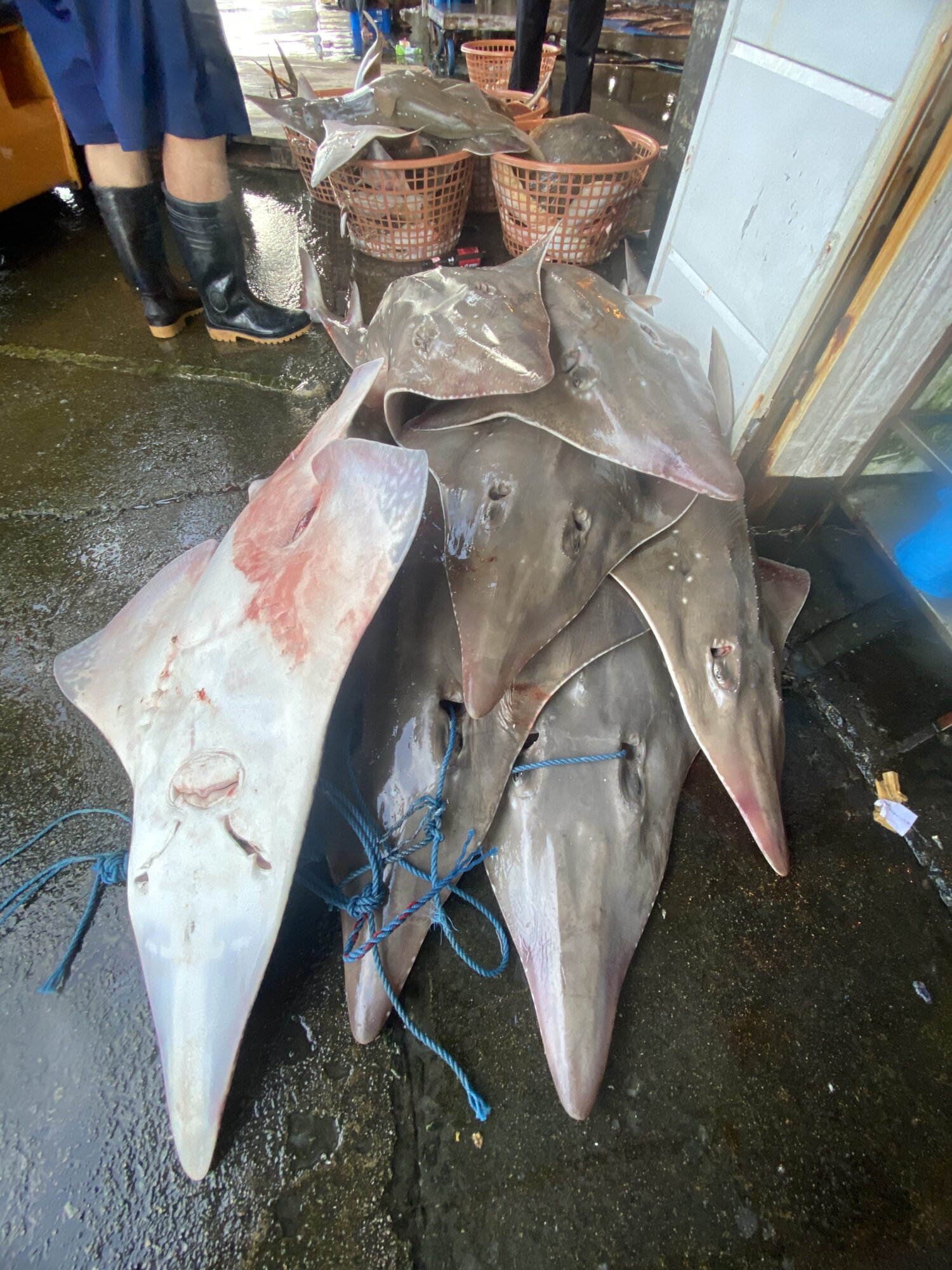
Rhychobatus at the fish market in Penghu, taken in the bottom longline fishery. Wedgefishes are consumed for food and used in the shark fin trade. Photo © Kevin Weng
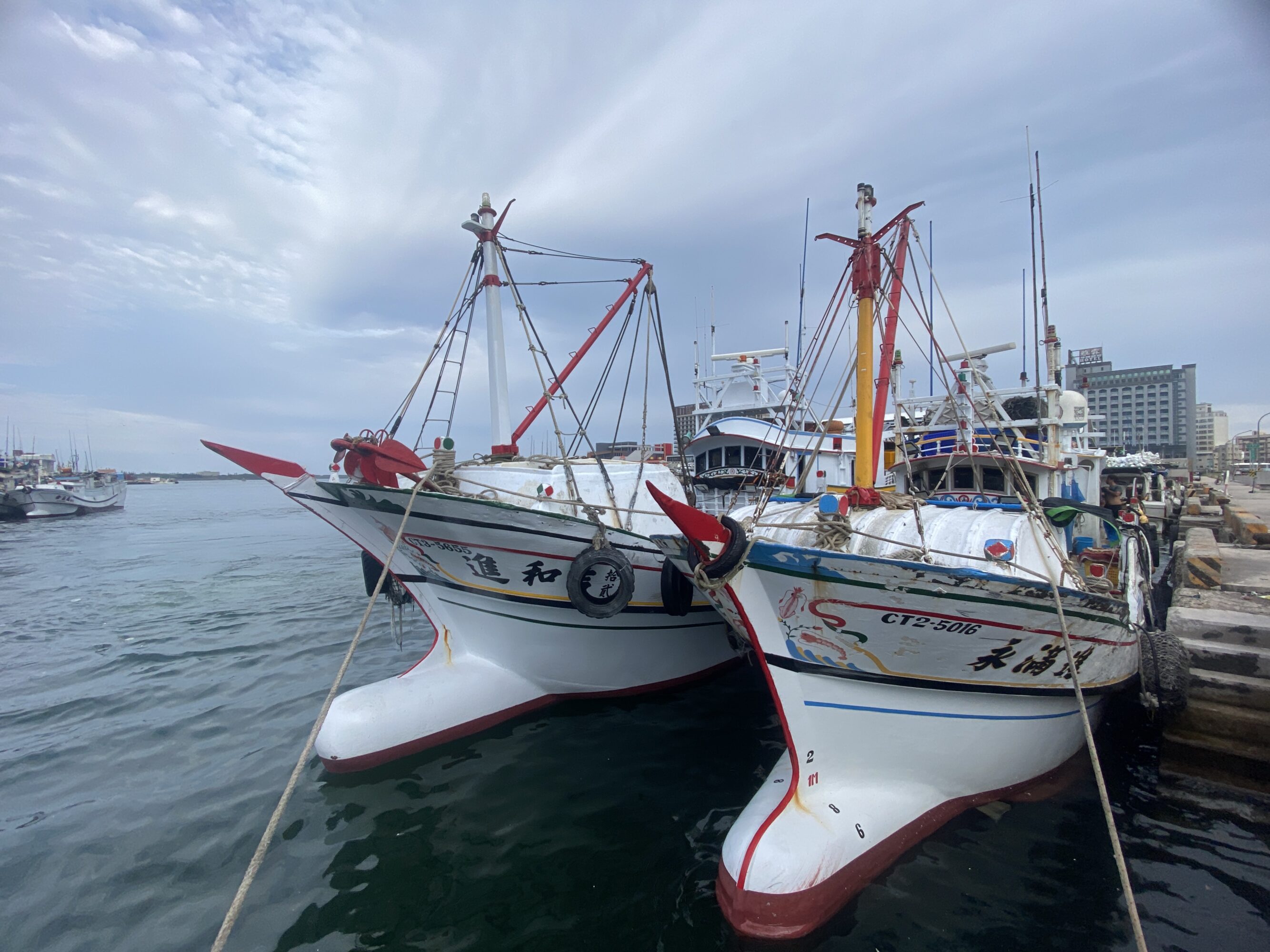
Fishing boats in port, Penghu, Taiwan. Photo © Kevin Weng
Taiwan has a dizzying diversity of fisheries, from harpooning marlin to trawling to surface neuston nets catching tiny fish larvae. The vast food production by fisheries is a critical element of Taiwan’s self-sufficiency. We are working with fishermen in Taiwan to understand wedgefish ecology and population genetics, to inform conservation and management. The western coast of Taiwan is a mostly soft sediment environment well suited to gillnet fisheries, where our collaborator Captain Shun operates several vessels. He took me aboard several times to collect samples of wedgefish bycatch. It is a complex operation with strong currents, cross winds and long nets. The gillnet is recovered with a large hydraulic puller, so I stayed out of the way and did my science! As the net flew in I saw various bony fishes including tonguefishes, snappers and croakers, snails, and elasmobranchs including catsharks, stingrays and wedgefishes.
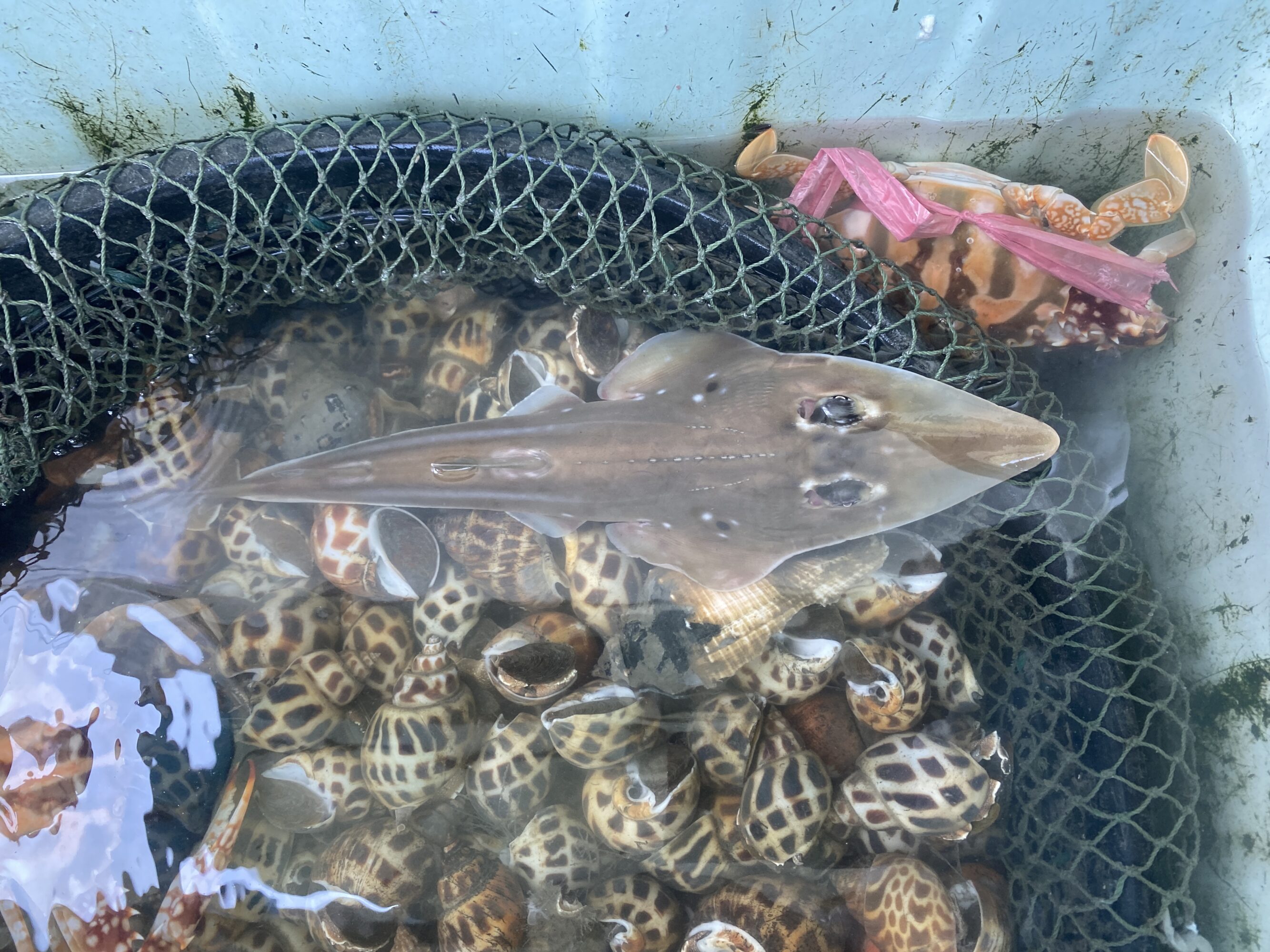
A baby Rhynchobatus in the basket holding the catch from the gillnet. Photo © Kevin Weng
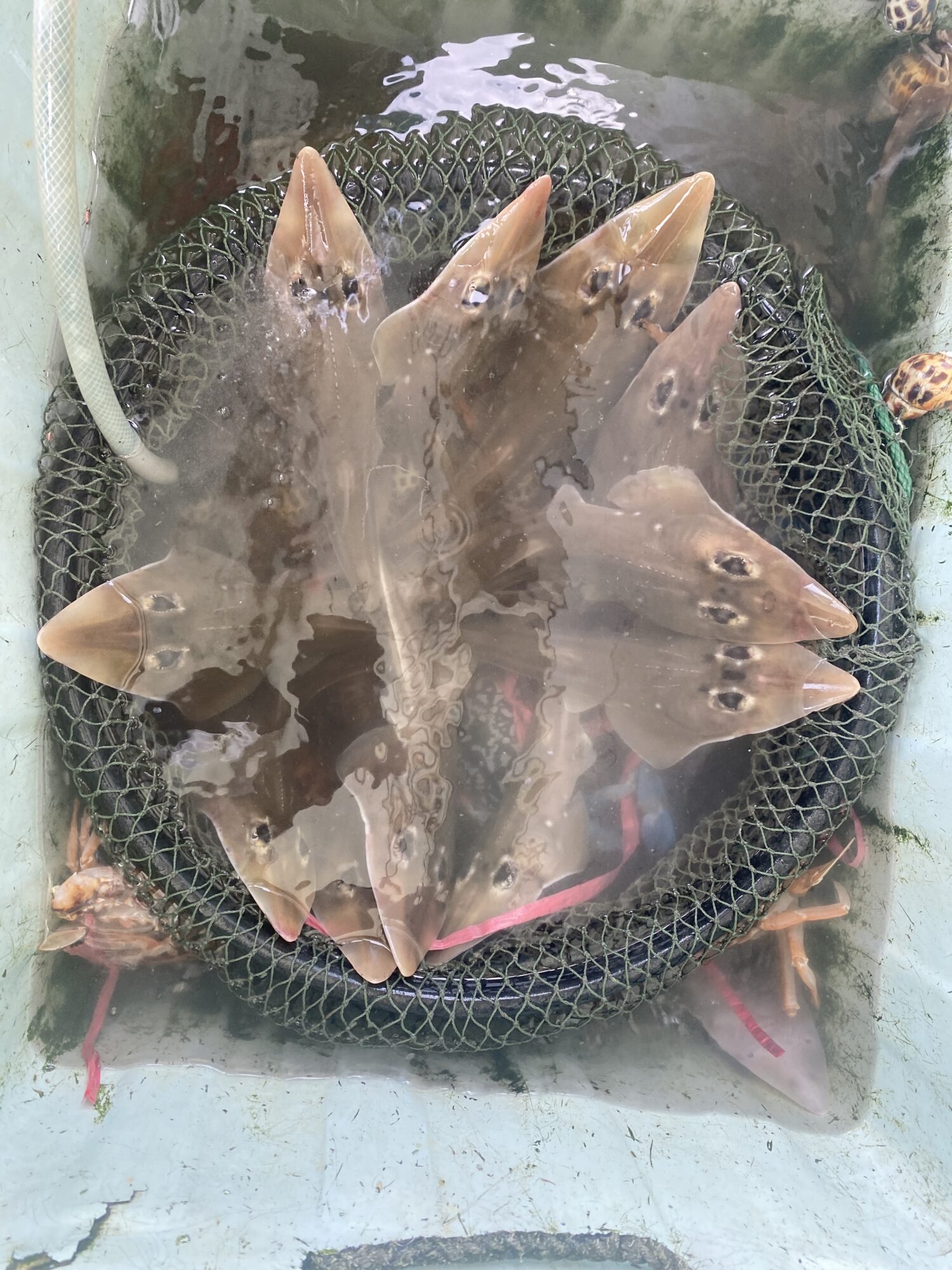
Multiple baby wedgefishes caught in a gillnet set. They are in a basket of seawater with a hose providing additional new water. Photo © Kevin Weng
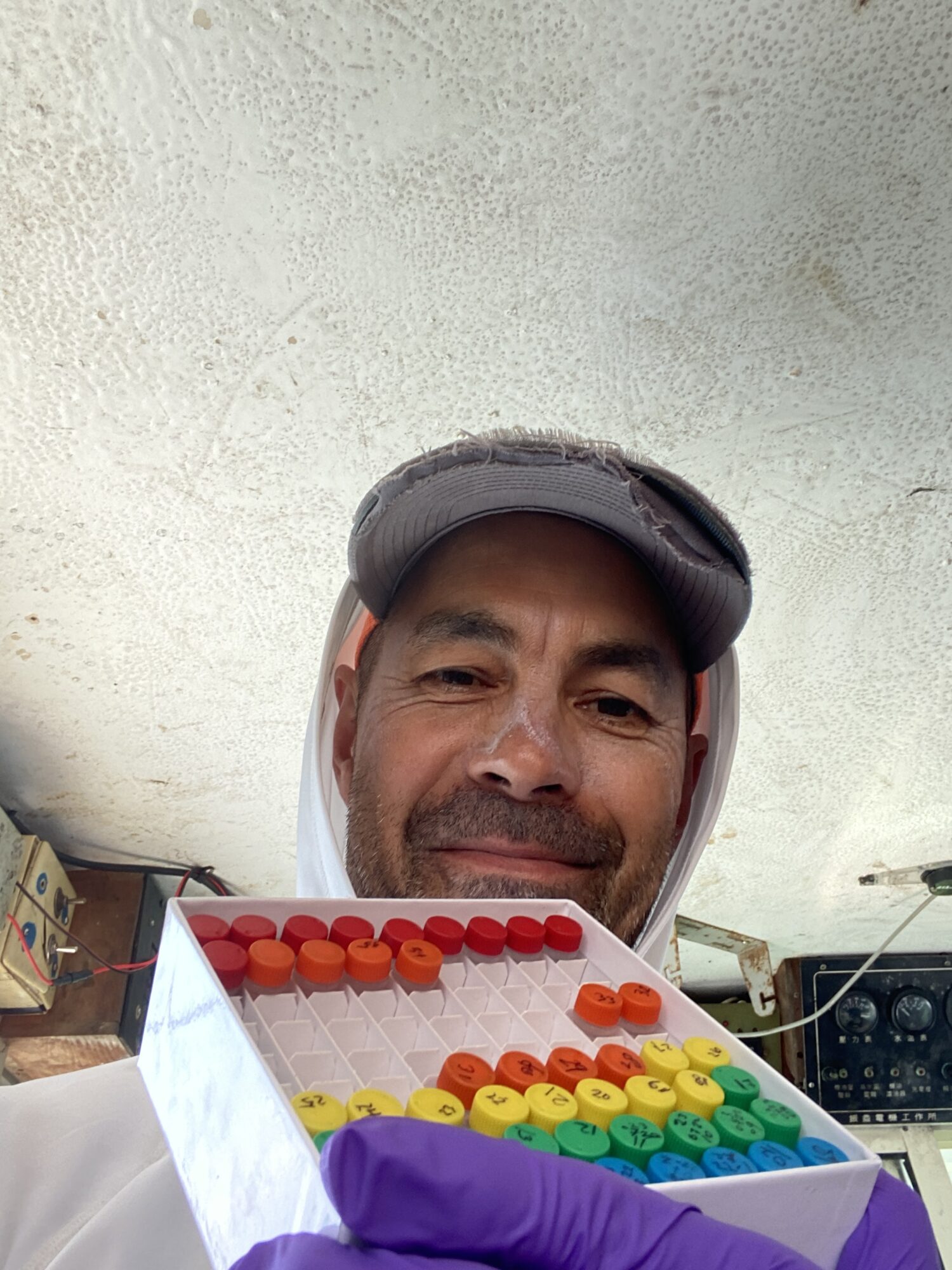
Weng holds a box of DNA samples taken on Captain Shun's fishing vessel. Photo © Kevin Weng
I eagerly received the baby wedgefishes from the crew so I could take measurements and a tiny fin clip before returning the fish to the wild. Our DNA samples will shed light on two questions: (1) What species of wedgefishes occur in Taiwan? (2) What is the population structure of wedgefish species in the SE Asia region? We will collaborate with other investigators working through the region to find out.
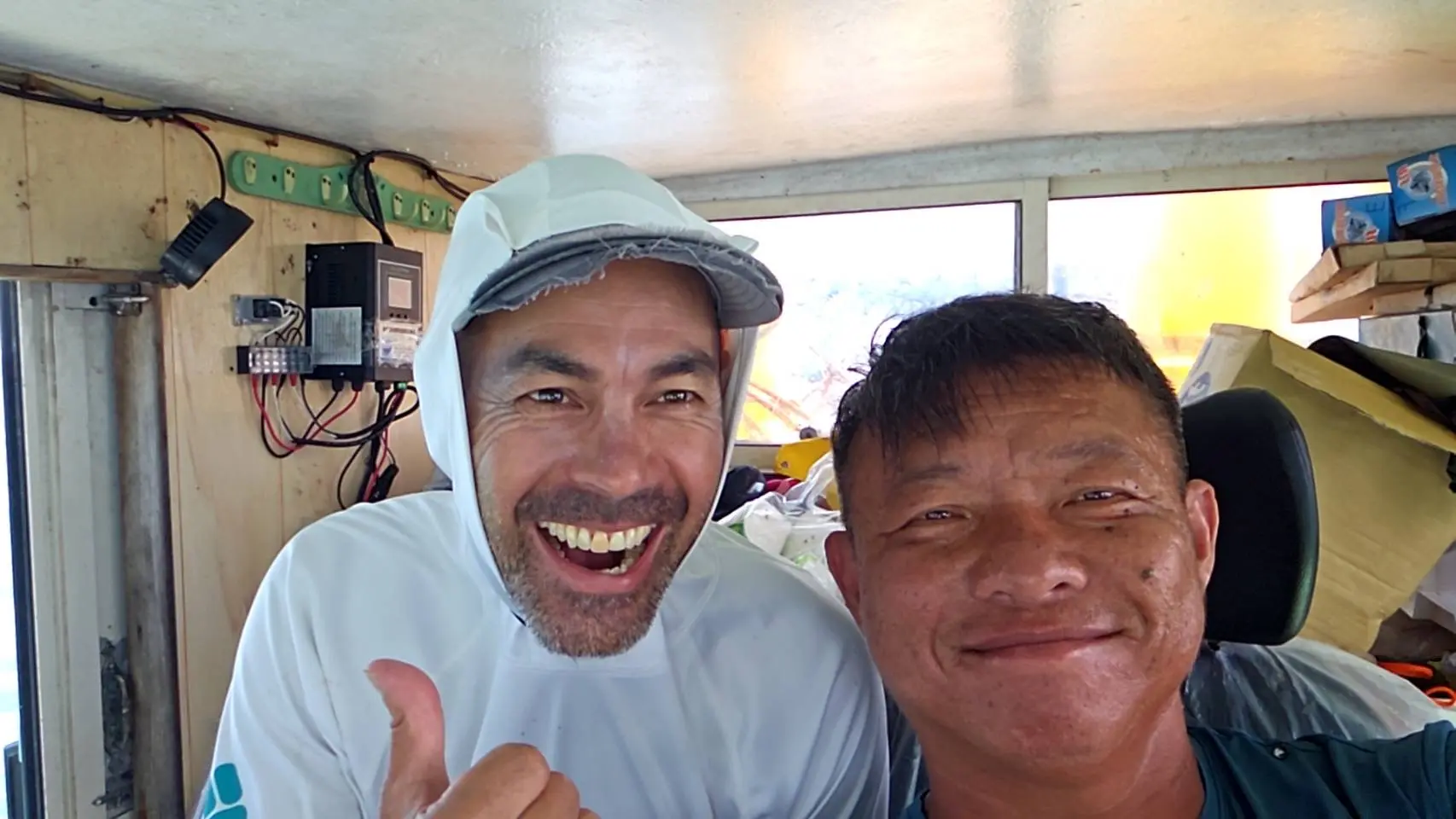
With Captain Shun's permission we joined several fishing trips to collect DNA samples. Photo © Kevin Weng
